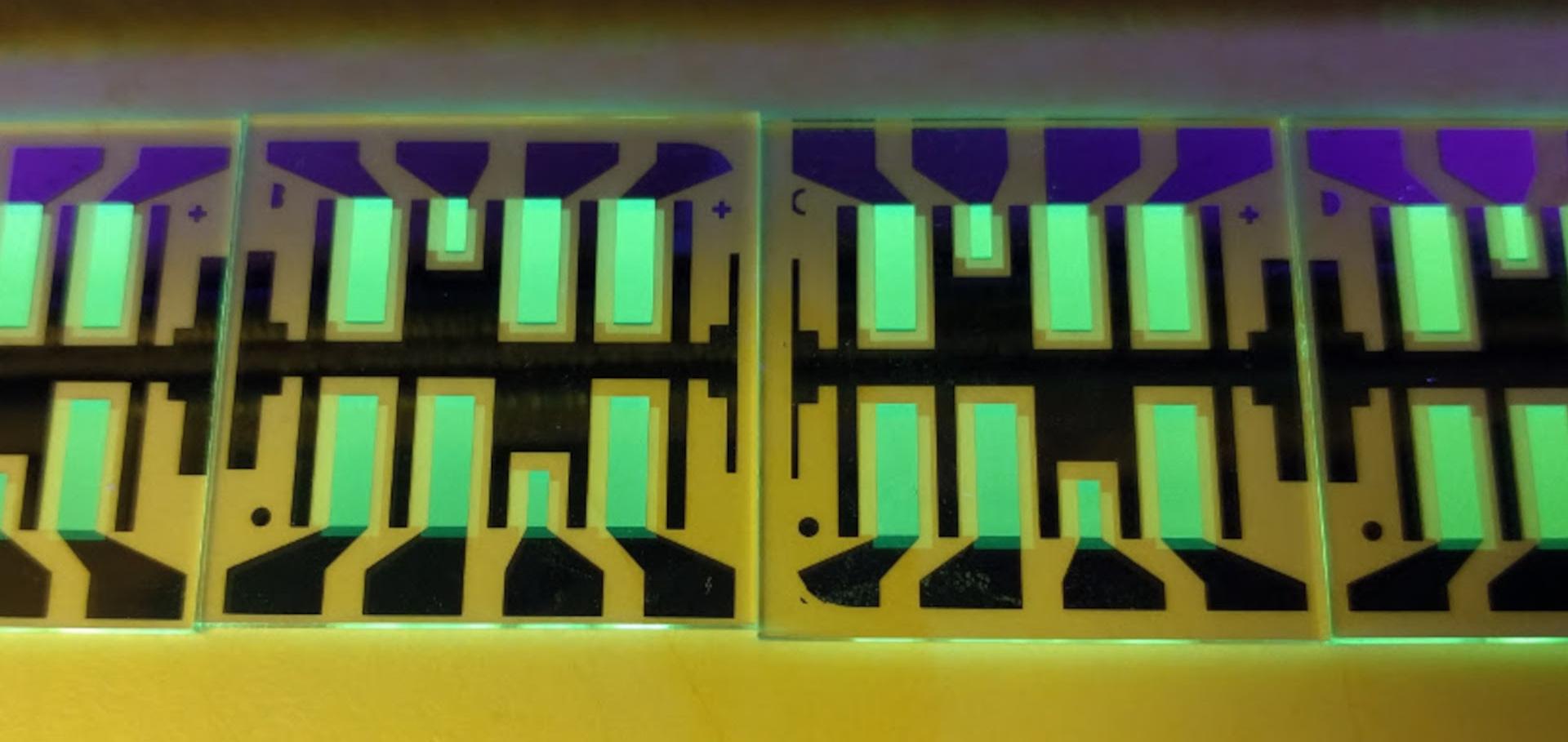Doping of organic semiconductors
Physica Status Solidi (A) Applications and Materials Science 210:1 (2013) 9-43
Abstract:
The understanding and applications of organic semiconductors have shown remarkable progress in recent years. This material class has been developed from being a lab curiosity to the basis of first successful products as small organic LED (OLED) displays; other areas of application such as OLED lighting and organic photovoltaics are on the verge of broad commercialization. Organic semiconductors are superior to inorganic ones for low-cost and large-area optoelectronics due to their flexibility, easy deposition, and broad variety, making tailor-made materials possible. However, electrical doping of organic semiconductors, i.e. the controlled adjustment of Fermi level that has been extremely important to the success of inorganic semiconductors, is still in its infancy. This review will discuss recent work on both fundamental principles and applications of doping, focused primarily to doping of evaporated organic layers with molecular dopants. Recently, both p- and n-type molecular dopants have been developed that lead to efficient and stable doping of organic thin films. Due to doping, the conductivity of the doped layers increases several orders of magnitude and allows for quasi-Ohmic contacts between organic layers and metal electrodes. Besides reducing voltage losses, doping thus also gives design freedom in terms of transport layer thickness and electrode choice. The use of doping in applications like OLEDs and organic solar cells is highlighted in this review. Overall, controlled molecular doping can be considered as key enabling technology for many different organic device types that can lead to significant improvements in efficiencies and lifetimes. Molecular doping of organic semiconductors has become the key enabling technology for highly efficient and long-living organic light emitting diodes (OLEDs) and made them commercially viable. Other areas of application such as OLED lighting and organic photovoltaics are on the verge of broad commercialization. Again, molecular doping offers many advantages here. However, electrical doping of organic semiconductors, i.e. the controlled adjustment of Fermi level that has been extremely important to the success of inorganic semiconductors, is still in its infancy. This review discusses recent work on both fundamental principles and applications of doping, focused primarily to doping of evaporated organic layers with molecular dopants. Copyright © 2013 WILEY-VCH Verlag GmbH & Co. KGaA, Weinheim.Front Cover: Doping of organic semiconductors (Phys. Status Solidi A 1/2013)
physica status solidi (a) – applications and materials science Wiley 210:1 (2013)
Open-Circuit Voltage and Effective Gap of Organic Solar Cells
Advanced Functional Materials 10:6 (2013)
Abstract:
The open-circuit voltage (V) of an organic solar cell is limited by the donor-acceptor material system. The effective gap E between the electron affinity of the acceptor and the ionization potential of the donor is usually regarded as the upper limit for V, which is only reached for T → 0 K. This relation is confirmed for a number of small-molecule bulk heterojunction p-i-n type solar cells by varying the temperature and illumination intensity. With high precision, the low temperature limit of V is identical to E . Furthermore, the influence of the hole transport material in a p-doped hole transport layer and the donor-acceptor mixing ratio on this limit V is found to be negligible. Varying the active material system, the quantitative relation between V and E is found to be identity. A comparison of V in a series of nine different donor-acceptor material combinations opens a pathway to quantitatively determine the ionization potential of a donor material or the electron affinity of an acceptor material. © 2013 WILEY-VCH Verlag GmbH & Co.Self-passivation of molecular n-type doping during air exposure using a highly efficient air-instable dopant
Physica Status Solidi (A) Applications and Materials Science (2013)
Abstract:
In contrast to p-dopants, highly efficient molecular n-dopants are prone to degradation in air due to their low ionization potentials, limiting the processing conditions of doped functional organic devices. In this contribution, we investigate the air-stability of pure films of the n-dopant tetrakis(1,3,4,6,7,8-hexahydro-2H-pyrimido[1,2-a]pyrimidinato)ditungsten(II) (W2(hpp)4) and of C60 layers doped by W2(hpp)4. We find that 1/3 of the initial conductivity of the doped C thin films can be restored by thermal annealing in vacuum after a drop by 5 orders of magnitude upon air exposure. Furthermore, we show by ultraviolet photoelectron spectroscopy (UPS) and Seebeck measurements that the Fermi level shift toward the lowest unoccupied molecular orbital (LUMO) of C remains after air exposure, clearly indicating a conservation of n-doping. We explain these findings by a down-shift of the W(hpp) energy levels upon charge-transfer to a host material with deeper lying energy-levels, facilitating a protection against oxidation in air. Consequently, the observed recovery of the conductivity can be understood in terms of a self-passivation of the molecular n-doping. Hence, an application of highly efficient n-doped thin films in functional organic devices handled even under ambient conditions during fabrication is feasible. © 2013 WILEY-VCH Verlag GmbH & Co. KGaA, Weinheim.Morphology and molecular orientation of ethyl-substituted dicyanovinyl-sexithiophene films for photovoltaic applications
Thin Solid Films 525 (2012) 97-105


